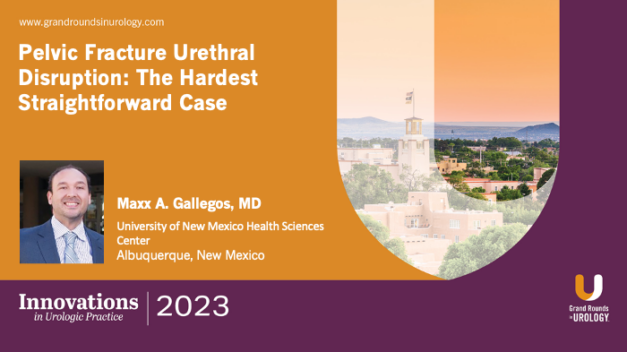Pelvic Fracture Urethral Disruption: The Hardest Straightforward Case
Maxx A. Gallegos, MD, discusses Pelvic Fracture Urethral Disruption/ Injury (PFUI), including its etiology, diagnosis, preoperative planning, and treatment. He begins by debunking a few myths about the location of PFUIs and their etiologies.
Dr. Gallegos then presents the process of diagnosis for PFUIs, and which tools are inappropriate for diagnosis and preoperative planning. He discusses the benefits and setbacks of preoperatively treating PFUI patients with Primary Realignment versus Super Pubic Tube alone.
Dr. Gallegos then outlines the reconstruction challenges associated with treating PFUIs. He notes that, while the surgical steps are straightforward, complications due to the number of required sutures, lack of urethral length, and the proximity to the rectum are common.
He concludes by sharing tips, tricks, and best practices for successful urethral reconstruction after a PFUI. He compares the outcomes for males and females and presents examples of each.
Read More

